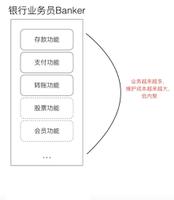上下文接口设计
我的问题是关于Context接口的设计选择。如果child要从中创建上下文,parent可以执行以下操作:
child, cancel := context.WithTimeout(parent, timeout)如果WithTimeout是接口的一部分,那就更好了,这样我们可以简单地写:
child, cancel := parent.WithTimeout(timeout)对我来说似乎干净得多。它更短,并且不需要import context。
为什么产生子上下文的函数不是Context接口的一部分?
回答:
这是context.Context类型:
type Context interface { Deadline() (deadline time.Time, ok bool)
Done() <-chan struct{}
Err() error
Value(key interface{}) interface{}
}
这很简单。如果要编写它的实现,可以这样做吗?是的,很容易。由于没有“设置”方法,因此每个方法都只能返回默认值/
零值,并且是“有效”的实现。这正是背景和TODO上下文(context.Background()和context.TODO())所做的。
如果您要添加从现有环境(例如,等) 派生
新上下文的功能作为接口本身的一部分,则将需要为所有人提供(有效)实现,这是不可行的;而且几乎不需要同时使用它们,因此这会浪费资源。context.WithCancel()context.WithDeadline()Context
扩展负责添加实现。如果您查看context软件包的实现方式:context/context.go,context.Context则将看到不同的“派生”或“扩展”的不同实现:
// An emptyCtx is never canceled, has no values, and has no deadline. It is not// struct{}, since vars of this type must have distinct addresses.
type emptyCtx int
// A cancelCtx can be canceled. When canceled, it also cancels any children
// that implement canceler.
type cancelCtx struct {
Context
done chan struct{} // closed by the first cancel call.
mu sync.Mutex
children map[canceler]bool // set to nil by the first cancel call
err error // set to non-nil by the first cancel call
}
// A timerCtx carries a timer and a deadline. It embeds a cancelCtx to
// implement Done and Err. It implements cancel by stopping its timer then
// delegating to cancelCtx.cancel.
type timerCtx struct {
cancelCtx
timer *time.Timer // Under cancelCtx.mu.
deadline time.Time
}
// A valueCtx carries a key-value pair. It implements Value for that key and
// delegates all other calls to the embedded Context.
type valueCtx struct {
Context
key, val interface{}
}
显然,我们可以弥补软件包context.Context中没有的其他有用扩展context。如果您有新想法,还可以将其添加到Context界面中吗?
这将破坏所有现有的实现 ,因为显然您的新想法未在其他人的当前实现中实现。
以上是 上下文接口设计 的全部内容, 来源链接: utcz.com/qa/399500.html






